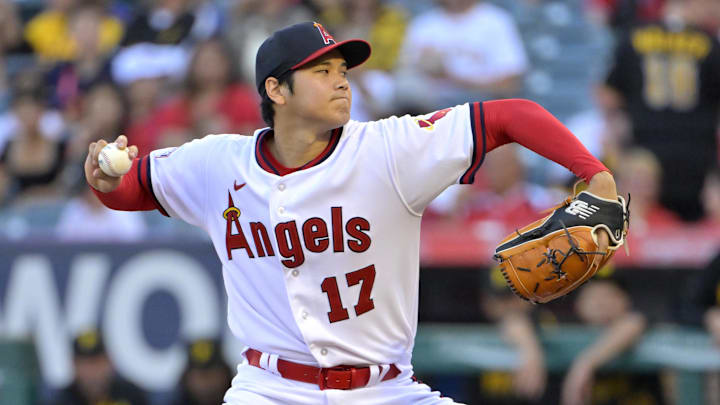
Okay, so this deal is obviously fantastically awesome for the Padres and a great move for the Angels, but why should the MLB execs in Manhattan be thrilled with this deal?
Much like when Boston traded Ruth to New York it all worked out (well, except for the Red Sox for 86 years, but that's another story for another day). With a Wild Card system, it may have only taken Boston 46 or 56 years to win another title. Plus, as far as I know, I don't think Arte Moreno has his hands in any theatrical productions that he urgently needs to fund any time soon. Major League Baseball should be ecstatic over this deal for multiple reasons.
1. It creates two competitive teams out of none in the Angels and Padres. The Padres just don't have the offense this season to get above .500 (never mind the playoffs), so Ohtani jacks up their offense and makes the pitching even better than it is for this season and those to come. A realist will tell you the Angels aren't going anywhere with Ohtani, so substitute a slugger and legit starter and throw in a potentially reignited Trout and all of a sudden the Angels are fighting off Houston for second place in the AL West next season.
2. It creates more league parity, which is great for any professional league. I'm a Red Sox fan, but I know baseball fans nationally get bored with another Red Sox-Yankees battle for baseball dominance. The league and the fans need multiple teams in the mix for the World Series. In the National League this year, its Atlanta and, well, Atlanta. Sure teams like the Marlins and Phillies are having nice seasons and Arizona, the Giants and Reds are nice stories, but we're on a clear collision course for another Braves/Dodgers NLCS and another Braves World Series appearance. Not that there's anything wrong with that as Jerry Seinfeld and George Costanza would say, but I think baseball would benefit drastically from a four-team race to the end in the NL West. Sorry Colorado, I got nothing for you. And like I mentioned before, the AL West also gets more competitive, which raises the competition level from season series to season series to new heights. The trade also should prove to awaken sleeping historical giants like the Red Sox and Yankees and hopefully teams like the Cubs and somebody from the AL Central, a division that has been the proverbial snoozefest for far too long.
3. And lastly, MLB would love this deal because of the almighty dollar, which they and every other pro sports league loves the most. More fan interest means more fans in seats which means more revenue and more new television and media deals. You get the jist here. Commissioner Rob Manfred could get a contract renewal despite his severe drop in popularity. Yet, much like when teams win and people care less about an unlikeable owner, this deal would have so many positive peripheral effects on the league that fans would not care about liking or not liking the commissioner and MLB front office folks. Fans would just be loving the game they've wanted to love for a long time.
